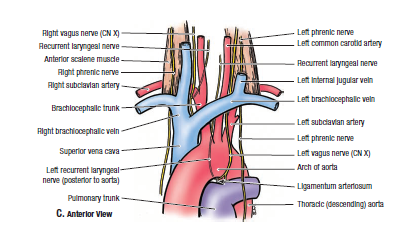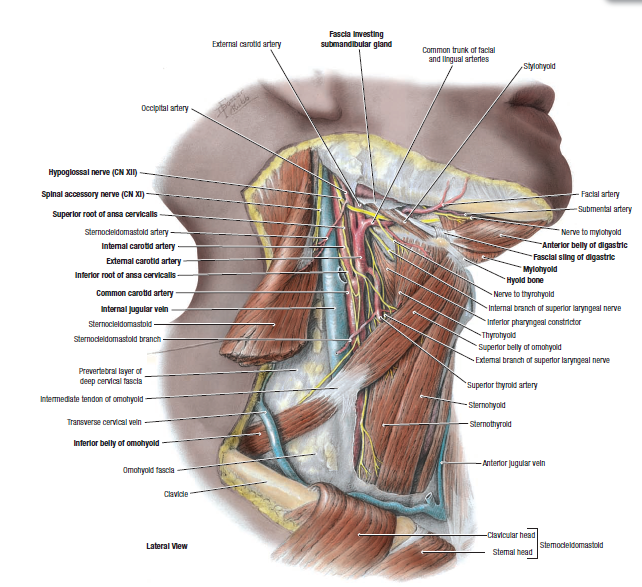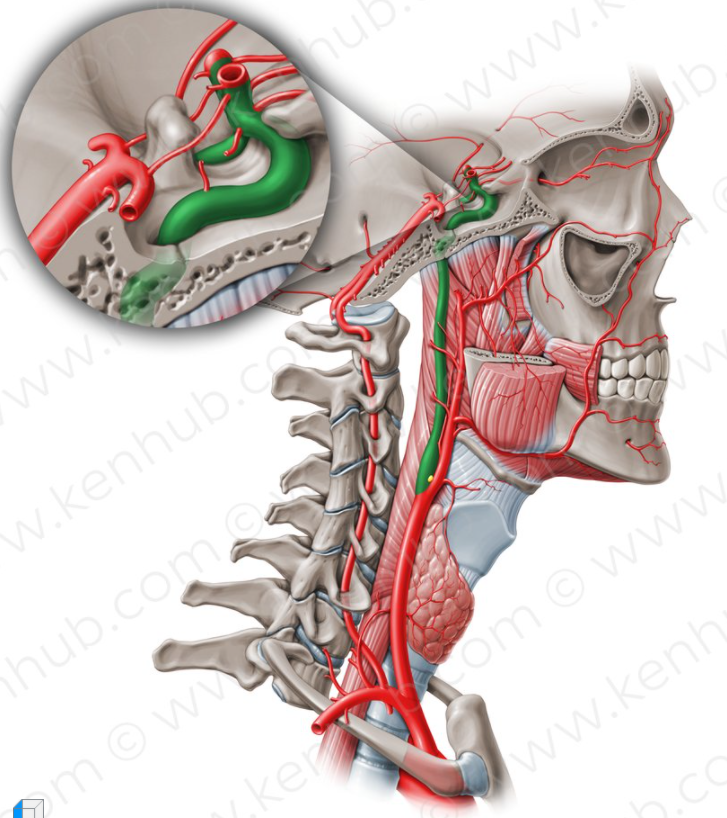The terminal branches of the internal carotid are as follows (Figure 16-3A–C):
- Ophthalmic artery. Courses through the optic canal to supply the retina, orbit and part of the scalp.
- Posterior communicating artery. Joins the posterior cerebral artery with the internal carotid artery.
- Anterior cerebral artery. Courses superior to the optic chiasma and enters the longitudinal cerebral fissures. The anterior cerebral artery courses superiorly and then posteriorly along the corpus callosum, providing blood supply to the medial sides of both cerebral hemispheres.
- Anterior communicating artery. Is a very short artery that connects the two anterior cerebral arteries.
- Middle cerebral artery. Courses into the lateral fissure between the parietal and temporal lobes. It sends many branches to the lateral sides of the cerebral hemispheres and central branches into the brain.
- The middle cerebral artery (MCA) is the most common artery involved in acute stroke. It branches directly from the internal carotid artery and consists of four main branches, M1, M2, M3, and M4. These vessels provide blood supply to parts of the frontal, temporal, and parietal lobes of the brain, as well as deeper structures including the caudate, internal capsule, and thalamus.


